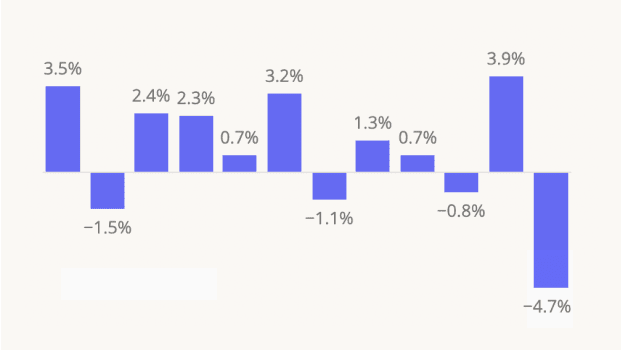Stanford Stadium has hosted numerous major sporting events over the years – from Super Bowl XIX to soccer matches at the 1984 Summer Olympics, and both the 1994 Men’s and 1999 Women’s World Cup. But on May 31st and June 1st, 2025, Coldplay played the first live music event ever held at the venue – part of the band’s “Music of the Spheres” tour – and what a debut it was.
We examined the data to see how attendance spiked during this landmark concert and how the audience compared to the stadium’s usual visitor base.
Rocking Visitation
During the week of May 26th, 2025, when Coldplay took the stage, visits to Stanford Stadium surged by an astonishing 1425.9% compared to the venue’s weekly average since June 2024. Other recent major events – including Stanford commencement (June 16th, 2024), the big Earthquakes vs. Galaxy MLS match (June 29th, 2024), and the Stanford Cardinal’s own home opener against TCU on August 30th, 2024 – all drew much smaller crowds than the Coldplay concert.
Fans From Afar
Concertgoers came from far and wide to see Coldplay in action. Plenty of locals attended, including 15.1% who came from less than five miles away. But nearly one-fifth of visitors journeyed more than 100 miles to enjoy the music – a testament to the band’s strong draw.
A Different Audience
To understand how the Coldplay concert impacted Stanford Stadium’s visitor profile, we compared the psychographics of Stanford Stadium’s captured market during the 2024 football season (August 24th to December 1st, 2024) to those during the Coldplay concert.
Across both analyzed periods, Stanford Stadium attracted higher-than-average shares of Spatial.ai: PersonaLive’s “Ultra Wealthy Families,” “Educated Urbanites,” and “Young Professionals” segment groups. However, the concert’s audience skewed more toward “Ultra Wealthy Families,” whereas football fans were nearly twice as likely to be “Young Professionals” and slightly more likely to be “Educated Urbanites”. “Near-Urban Diverse Families” and “Wealthy Suburban Families” were underrepresented in the stadium’s market during both periods, though they both constituted a slightly higher share during the Coldplay concert – further underscoring the event’s power to attract different audiences than usual.
The Power of Music
As universities navigate the changing nature of college athletics, NIL rights, and shifting revenue streams, using a football stadium as a concert venue is a creative way to utilize the space and bring in some dollars – as well as joy to both students and other visitors. Is this milestone event a precursor to more major cultural happenings at the Bay Area stadium?
For more data-driven live event analyses, follow The Anchor.




.svg)





.png)
.png)

.png)
.png)






.avif)


